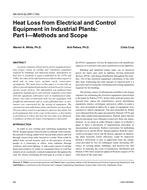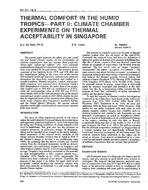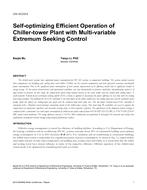Extruded aluminium tubing of the type used for compact heat exchangers in automotive air conditioning systems is considered for use in the manufacture of a condenser and evaporator for domestic refrigerators. Parametric analyses approximated trade-offs among primary cost determinants (aluminium mass, refrigerant inventory, and number of circuits), subject to volume and frost- and dust-fouling constraints, and identified tube configurations that would be competitive with conventional wire-on-tube condensers and finned-tube evaporators. Several hundred finite-difference equations were used to represent each heat exchanger, and optimal component configurations were determined. The best condenser design used a tube with 10 submillimetre ports with 6-mm (0.24-in) lateral fins to increase heat transfer. The optimal evaporator design also had two parallel circuits and incorporated lateral fins, but had only one relatively large port. Approximations were made regarding three-dimensional and other effects so the optimal component designs could be used as initial guesses for a full-system optimisation to minimise material plus refrigerant costs. The results suggested the existence of feasible designs that are comparable in cost to conventional heat exchangers. Further, the extruded aluminium exchangers reduce refrigerant charge and provide a system coefficient of performance (COP) comparable to current technology.
KEYWORDS: year 1997, Domestic, refrigerators, heat exchangers, aluminium, condensers, evaporators, heat flow, optimisation, comparing, pressure drop, measuring, coefficient of performance
Citation: Symposium, ASHRAE Trans. 1997, vol.103, part 1
Product Details
- Published:
- 1997
- File Size:
- 1 file , 1.3 MB
- Product Code(s):
- D-16451


